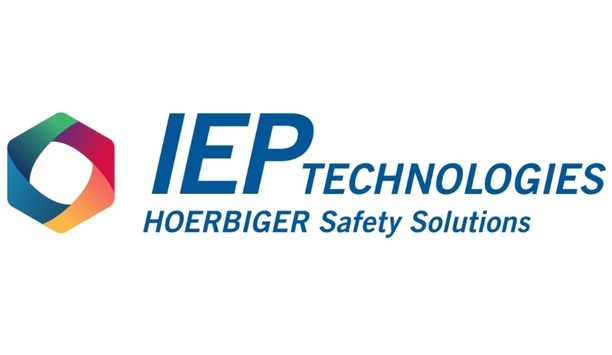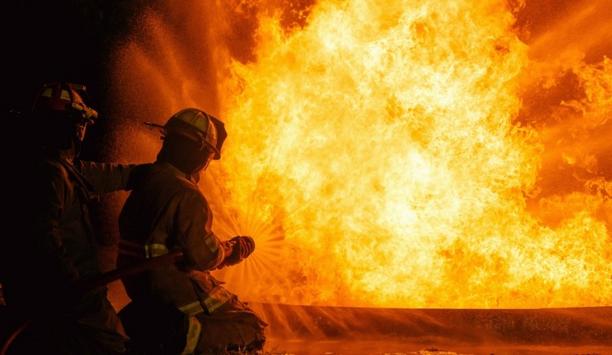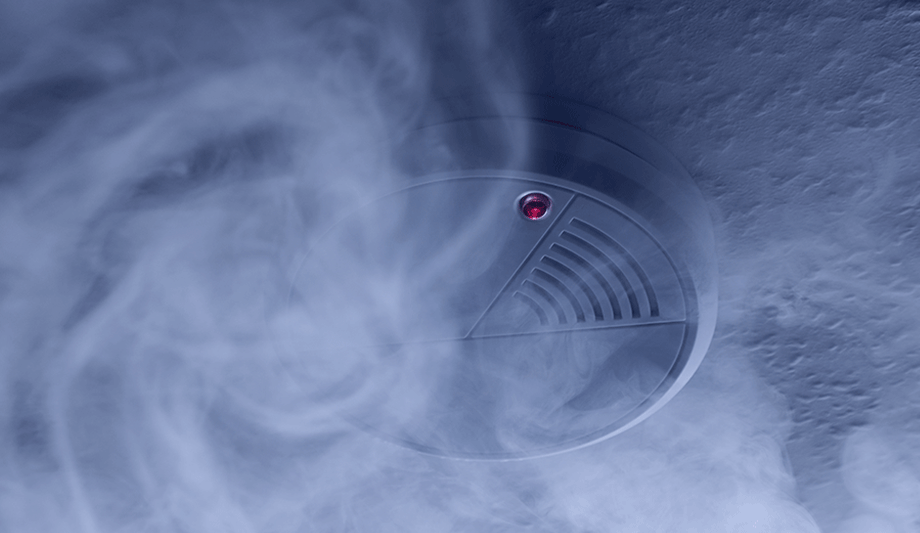IEP Technologies - Experts & Thought Leaders
Latest IEP Technologies news & announcements
Summer brings outdoor adventures, water activities, and barbecues, but it also can bring danger to firefighters, who exert themselves in heavy gear and high temperatures. To help prevent firefighter dehydration and heat-related injuries, especially during long incidents and wildfire response, DripDrop Hydration, PBC, has partnered with the National Volunteer Fire Council (NVFC) for the fifth year to donate 200,000 sticks of electrolyte drink mix to volunteer fire departments. DripDrop DripDrop is a fast, clinically-proven way to replenish lost fluids and electrolytes quickly DripDrop is a fast, clinically-proven way to replenish lost fluids and electrolytes quickly, so responders can perform at their best, both physically and mentally. This year, a total of 1,000 volunteer fire departments will receive two cases (200 sticks) each of DripDrop electrolyte drink mix. “The health and safety of volunteer firefighters is a top priority for the NVFC,” said National Volunteer Fire Council (NVFC) Chair - Steve Hirsch, adding “We are pleased to partner with DripDrop once again to ensure responders across the country stay hydrated and avoid illness this summer in order to come home safely and serve their communities at their best.” DripDrop partners with National Volunteer Fire Council “DripDrop is proud to partner with the National Volunteer Fire Council and its meaningful efforts to support fire and EMS organizations through a wide range of services and programs,” said John Shea, CMO of DripDrop Hydration, adding “We are privileged to have our product trusted by firefighters around the country and are pleased to be able to fuel these heroes in their efforts to keep communities safe.” Active volunteer firefighters located in the U.S. can enter for the chance to win a product donation between July 8 and July 21 at 11:59 pm PDT. Only one entry per fire department will be accepted. Selected firehouse to be notified by email A total of 1,000 fire departments will be randomly selected from all eligible entries. In the event of selection, each selected firehouse will be notified by email the week of July 21st and shipped two 100ct cases of DripDrop.
A practical, economical and versatile solution was demanded when IEP Technologies was approached to design an Explosion Protection System for a new spray drying process in a major Food Ingredients Manufacturing Plant based in the US Mid-West. The manufacturer may produce any one of 14 different cooking ingredients for the food industry on any given day, depending upon their customer requirements. Given the wide range of materials used and their respective particle/dust properties, individual explosibility characteristics had to be considered carefully in addition to the process plant design criteria to propose an explosion protection solution capable of providing appropriate protection as well as offering cost-effective long-term operation. High risk of dust explosions Many industrial manufacturing processes are inherently exposed to the risk of an explosion, whenever fine particulates dispersed in air are subjected to an ignition source within a contained environment. While the initial step in good plant design is always to control any potential ignition sources (typical examples include hot surfaces, open flames, mechanical friction or uncontrolled electrostatic discharges), often the risk cannot be totally ruled out therefore, measures to control or mitigate the disastrous effects of an explosion event (deflagration) must be put in place. Regulating potential ignition sources In this particular case, the process begins with wet slurry being introduced into the spray dryer, which is then dispersed into the heated environment and dried into fine particles. The particles are then discharged and pneumatically conveyed to four “Quad” Cyclones where lighter material is separated out while the heavier material is conveyed to a fifth cyclone for further separation. Finally, the material meeting the required specification for the process is transferred to the next stage elsewhere in the plant while the lighter material is returned to the start of the drying process for re-mixing with the incoming material. Spray Drying The five cyclones downstream continuously hold combustible dusts in suspension Spray drying processes always pose an explosion risk as they not only agitate the suspended dust particles in the air but also by their very nature introduce high temperatures which may create the initial ignition source under optimum conditions. In addition to this, the five cyclones downstream continuously hold combustible dusts in suspension, making them susceptible to any ignition source transferred from the dryer via a deflagration or in hot/burning material originating from the spray dryer itself. Explosion protection solution As an added dimension to the application, the spray dryer presented a further explosion protection challenge in view of its large volume – over 400 m3, as well as its low vessel strength. Taken together, these factors provided a uniquely demanding set of conditions for IEP to consider before proposing a practical and economical solution. The first step for IEP was to conduct testing of the materials to determine the explosibility properties. A third party had previously tested one of the products, but the other 13 were tested at the Combustion Research Center (CRC) in Marlborough, MA, an independent test laboratory specializing in the combustion hazards testing of dusts, liquids, and gases. Installing pressurized cylinders IEP’s design team was able to avoid using an excessive number of suppression cylinders Once collated, this data was used to exhaustively model different explosion scenarios for the vessels in the ingredients manufacturer’s spray drying process. The method of explosion protection selected involved installing pressurized cylinders to rapidly discharge explosion suppressant into the protected area in milliseconds upon activation. However, the unusual combination of large spray dryer vessel size (> 400 m3), along with its low vessel strength rating meant that a high number of cylinders would normally be needed to mitigate or isolate an explosion. Explosion suppression for spray drying Furthermore, after analyzing and modeling the spray dryer operation, IEP’s design team was able to avoid using an excessive number of suppression cylinders by using a recognized methodology where a reduced explosive volume can be used be used as the basis of the explosion suppression for spray drying processes of a specific design. The principle observation is that, as the top sections of some spray dryers do not contain dry combustible dust, explosion suppression of the entire volume is excessive and unwarranted. This technique allows for a reduced amount of suppressant to be delivered to the upper “wet zone” to maintain its inert state, while explosion protection is concentrated in the lower zone containing dry combustible powder, resulting in a reduction in the number of suppressors needed for overall protection. In North America, NFPA codes allow for this technique based upon performance-based approvals. Piston Fire II high-rate suppression and isolation cylinders Piston Fire II high-rate suppression and isolation cylinders were specified as part of the explosion protection system Several “Piston Fire II” high-rate suppression and isolation cylinders were specified as part of the explosion protection system, offering the additional benefit of having Class II Division 1 hazardous location approval. These suppressors as well as the SMARTDS dynamic explosion detection system are electrically connected to an EX8000 Control Panel with the capability to selectively activate specific suppressors in the zone where the deflagration is occurring. Targeted mitigation of explosion events The overall solution met the stated needs of the customer by providing highly targeted mitigation of explosion events at the same time as reducing the cost of equipment, installation and ongoing maintenance. By ingeniously combining experience and research done around the globe, IEP Technologies has demonstrated that their specialist know-how, capabilities and versatile range of explosion protection products and solution facilitate to create a practical and effective custom engineered fire safety solution.
A globally-renowned International Dairy Industry Group consulted IEP Technologies SAS located in France when an expansion project for one of their production sites in Western France led to the requirement for the upgraded process plant to be protected against the potentially dangerous and costly effects of industrial explosions. risk of explosion protection The company had decided to invest in the plant to increase its production capacity of dairy-based ingredients which are used in the food industry, however as part of the design review the company’s Global Insurance Underwriter judged that the new fluid bed drying and powder cooling plant as well as the upgraded dust collection equipment all needed to have “state of the art” explosion protection to meet or exceed their own internal engineering safety standards and rules. In addition to the dairy and food Industries, many manufacturing processes are at risk of dust explosions which may occur when fine particulates, dispersed in air, are exposed to an ignition source within a contained environment. Dust collectors These types of contained environments are commonly present throughout industry, for example piping and ducting, process vessels, dust collectors, and numerous types of special process machinery. Ignition sources should always be minimized or eliminated through a combination of engineering and safety controls The ignition source may originate from several conditions, including hot materials or surfaces, flames, self-heating clusters, friction or uncontrolled electrostatic discharges. Such ignition sources should always be minimized or eliminated through a combination of engineering and safety controls, effective management and operator training and awareness. Spray Drying process However, even with these safety measures in place, the explosion risk cannot be ignored in abnormal or fault conditions and therefore techniques to mitigate the potentially catastrophic effects of such an event must be employed. In this specific case, the upgrading of the Spray Drying process formed part of a much larger plant expansion which included a new external fluid bed dryer for final drying and effective powder cooling. In addition to this, the Cyclones currently in use were replaced with a totally new process bag filter. First protection concept and budgetary proposal IEP Technologies was first contacted by the project integrator in March 2018, and after an initial meeting where material explosion data and process specifications were collected, IEP Technologies responded with the first protection concept and budgetary proposal within a tight four-day turnaround. The existing drying chamber (10 meters in diameter) was already equipped with explosion venting panels and these were judged to be sufficient enough to provide explosion relief for this part of the process. Explosion suppression for the external fluid bed However, it was also necessary to isolate the chamber to reduce the risk of explosion propagating to the associated new equipment, at the same time as providing explosion suppression for the external fluid bed and the process bag filter. Deep discussions followed with the end user, integrator and insurance company to ensure that IEP’s proposal fully complied with the Insurer’s in-house standards and requirements as well as the pre-requisite local safety regulations and the European ATEX Directive. SmartDS dynamic explosion detection solution The key elements of the protection system selected consisted of SmartDS dynamic explosion detection solution During this phase, an extremely effective ongoing working partnership was formed between IEP France and the local integration manager and it is considered that this open and honest relationship facilitated a smooth execution of the overall project. The key elements of the protection system selected consisted of SmartDS dynamic explosion detection solution to provide early detection of developing explosions and to initiate the High Rate Discharge (HRD) Explosion Suppressors installed on the external fluid bed and process bag filter. High Rate Discharge Explosion Suppressors High Rate Discharge Explosion Suppressors actuate within 1.5 milliseconds of receiving an activation signal from the control unit, discharging the optimal quantity of powdered extinguishant through a special design nozzle system. The SmartDS is a SIL 2 certified rate of pressure rise detector which uses multiple algorithms that constantly interrogate pressure data to allow robust explosion detection while providing excellent false alarm immunity, thereby avoiding costly plant downtime. IR-13 Optical Detectors Additionally, in view of the relatively short distances involved, IR-13 Optical Detectors were installed on the process ducts to enable a suppressant isolation barrier to be rapidly activated before the flame front propagates through to associated equipment and creates a secondary explosion. The overall system is monitored and controlled by an EX-8000 multi-zone unit with the capability to selectively control discreet functions to initiate the appropriate protection devices only where and when they are needed. Explosion Protection System IEP’s local service team in France will be responsible for ongoing planned periodic maintenance IEP France was finally awarded the contract in July 2018 and all the elements of the Explosion Protection System were delivered in October 2018 with the project commissioned in December 2018, which was considered to be well within the project timeline. IEP’s local service team in France will be responsible for ongoing planned periodic maintenance, and the company has also purchased an inventory of running spares to minimize any downtime in the event of any system activations. Trusted Industrial Explosion Protection Partner The tight time scales involved in the execution of this entire project, right from initial contact, through protection concept design, proposal, proposal acceptance, system delivery, installation and commissioning, as well as the need to comply with the insurance company’s internal standards truly illustrates IEP’s capability as a Trusted Industrial Explosion Protection Partner, which comprises engineering review and design, system supply and ongoing maintenance, training and support.
The New Future For Fire Agencies
DownloadThe Eight Key Trends in Fire Detection in 2023
DownloadA Digital Platform to Improve Fire Safety Compliance and Inspections
DownloadOvercoming the Challenges of Fire Safety in the Paper Industry
DownloadCarbon Monoxide: Creeping Killer Caught In The Act
Download









